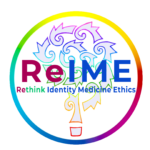
Sexual Orientation and Gender Identity
OVERVIEW
Gender Variance and Same-sex Attraction Require Different Paradigms.
- Depathologization of same-sex attraction by removing it from the DSM in 1973 and its “normalization” ended its medicalization.
- Gender dysphoria is a delineated mental health disorder in the current DSM. Its causes are unknown and it may vary in origin, intensity, and duration.
- While there is a genuine concern that gender diversity, not be improperly pathologized, treating gender dysphoria as a “natural variant” in children and youth leads to unnecessary medicalization that can compromise their sexual function, fertility, and long term health.
Normalization of same-sex attraction as a natural variant put an end to its medicalization. Same-sex attraction had been treated with chemical castration drugs, electroshock therapy, lobotomies, and institutionalization. However, acceptance of cross-sex gender variation in an individual often means the beginning of irreversible life-long medicalization. Consequently, care and treatment for gender variant children and youth require a different paradigm.
Gender expression and variation is now at the forefront of social changes around stereotypes, roles, and identities. Many of these changes are being brought about based on the view that variant gender identities are similar to and should be addressed in the same manner that society has addressed homosexuality over the past 50 years. Same-sex attraction was once deemed a “mental disorder” and was included in the DSM until 1973 when it was depathologized. Sexual orientation came to be viewed as an innate and immutable part of human variation. As a result, same-sex attracted persons were less stigmatized and sought legal protections from discrimination.
Accordingly, there are efforts to recognize and protect gender variant identities through a similar process by treating them as innate and hardwired. Although — as with sexuality — there are no definitive studies showing a biological cause for cross-sex identities, it appears to make sense that since it isn’t “wrong” to be a homosexual, neither is it not “wrong” to be transgender. We firmly agree that gender variant persons should not be discriminated against and that society should take steps to reduce stigmatization of gender variant individuals. However, while normalization of homosexuality as a natural variant put an end to its medicalization, acceptance of cross-sex gender variation in an individual often means the beginning of irreversible, life-long medicalization. Moreover, the current treatment paradigm for gender identity affects prepubescent children and those just entering puberty and directly impacts their sexual function, infertility, and long term health.
In addition, unlike homosexuality, gender dysphoria is a delineated mental disorder in the current DSM-V with different diagnostic criteria for children and adolescents. It is generally characterized by distress associated with incongruence between a person’s biological sex and experienced sense of gender. The causes of gender dysphoria are not known and the condition may vary in its origin, intensity, and duration.
While there is a genuine concern that gender diversity in children and youth not be improperly pathologized, there is an equal concern that it not be unnecessarily medicalized. A decision to view a condition as innate and immutable without robust evidence of biomarkers deeply impacts its assessment and treatment paradigm. In the case of gender dysphoria, viewing the condition as innate makes outcomes other than transition seem sub-optimal. Examples of other outcomes might include spontaneous remission or enhanced coping ability. Such outcomes could be construed as denying a person’s innate gender, but they do not require irreversible life-long medical intervention that compromise the minor’s sexual function, fertility and long term well being.